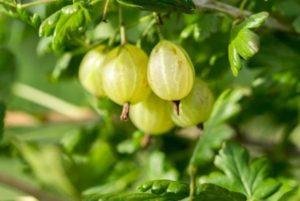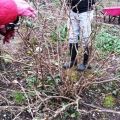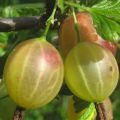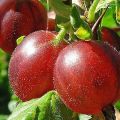Description of the Harlequin gooseberry variety, planting and care rules
The Harlequin gooseberry is preferred by many gardeners. This plant of Soviet selection is characterized by many advantages. It is not demanding on growing conditions. In addition, the culture has a long lifespan. With adequate care, the plant can produce crops for 20 years. To achieve good performance, it is worth providing the culture with normal care.
Description and characteristics of gooseberry harlequin
The bushes of this variety are medium in size and with a medium spreading crown. They have large leaves and small flowers.
Berries
The gooseberry of this variety has a rounded shape and a dark red hue. They are characterized by a smooth surface. Inside there is a juicy pulp of sweet and sour taste. It has a dense consistency. The fruit can weigh 5 grams.
Drought resistance, frost resistance
The variety is able to tolerate short-term drought normally - a maximum of 2 weeks. In dry summers, the bushes need watering. Otherwise, there is a risk of a strong decrease in yield.
The harlequin gooseberry is characterized by resistance to temperature fluctuations in winter. Moreover, in the springtime, inflorescences and buds can suffer from night frosts. If properly prepared for winter, the plant can withstand temperatures as low as -30 degrees. At lower rates, there is a risk of damage to the kidneys and young branches.
Fruiting and productivity
Fruit ripening occurs 2 months after the beginning of flowering. This happens in late July or early August. All berries ripen at the same time.
It is possible to collect 2 kilograms of fruit from 1 bush.

Application area
Fruits of this variety are suitable for harvesting. They make jam, marmalade, wine. Berries have a sour taste, so they are practically not eaten fresh. The fruit is characterized by a tough skin, which helps to increase the shelf life of the berries. After harvesting, unripe fruits can be kept in a dark and cool place.
Variety resistance to pests and diseases
This variety is characterized by high resistance to diseases and pests. The plant is resistant to powdery mildew. In rare cases, it encounters septoria, viral mosaic and anthracnose.
Leaves and shoots can be attacked by aphids and garden sawflies.For preventive purposes, it is recommended to use insecticides in the spring. This manipulation is carried out before the onset of fruiting.

Advantages and disadvantages of the variety
The key virtues of culture include the following:
- resistance to fungal infections;
- undemanding care;
- frost resistance;
- minimum number of thorns;
- excellent portability;
- long storage period.
At the same time, the culture also has certain disadvantages:
- not too high yield;
- insufficient resistance to septoria and sawfly attacks;
- pronounced sourness in taste.
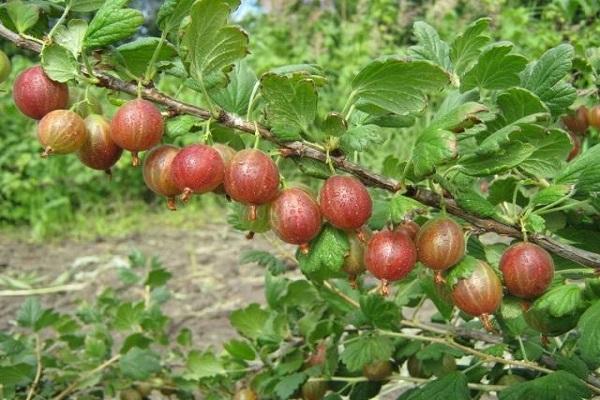
The specifics of growing crops
In order for the plant to develop normally and fully bear fruit, it needs to be provided with comprehensive care.
Timing
It is recommended to plant gooseberries in late September or early spring. In the first case, the bush should be huddled high so that it does not freeze. Planting work is completed 3-4 weeks before frost.
Choosing the right place
The Harlequin variety is suitable for light soil. It is not recommended to plant it in clay or waterlogged soil. Groundwater should be deep enough. A well-lit area is suitable for gooseberries. In the shade, the yield of the plant decreases, and the fruits become smaller.
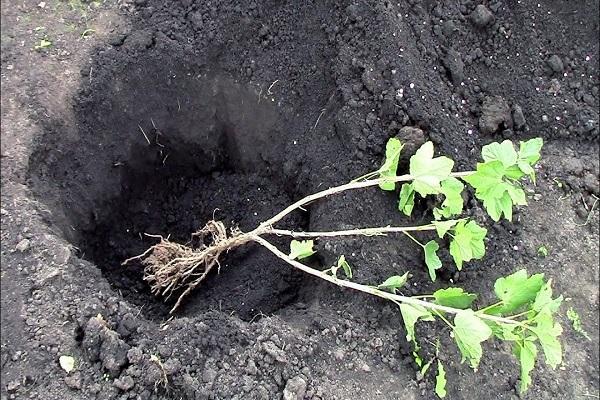
Selection and preparation of planting material
To choose the right seedling, it is worth considering the following features:
- the seedling should be 1-2 years old;
- in height, it should not exceed 40 centimeters;
- shoots should have black-brown bark;
- the plant should have 3 large semi-lignified roots and a large number of small fragments;
- shoots and roots should not have damaged areas.
To prepare the plant for planting, it is worth soaking its roots in a clay mash for a day. To do this, mix 300 grams of earth and clay and add 1 liter of water. The plant can be pruned before planting.
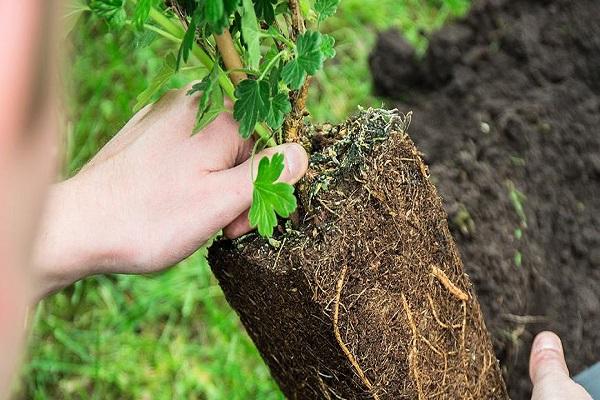
Landing scheme
It is worth planting the bushes using the row or pit method. Each plant requires a space of at least 1 square meter. Good spacing between rows is important when planting plants in large quantities. It should be 1.5 meters.
Plant Care Tips
In order for the plant to develop normally, it needs to be provided with quality care. It should be comprehensive.
Watering
Gooseberries should be watered several times throughout the season. The first time it is done in early spring, the second - during the flowering period. The soil is moistened for the last time before wintering. This should be done in early October. 1 bush requires 20-50 liters of water.
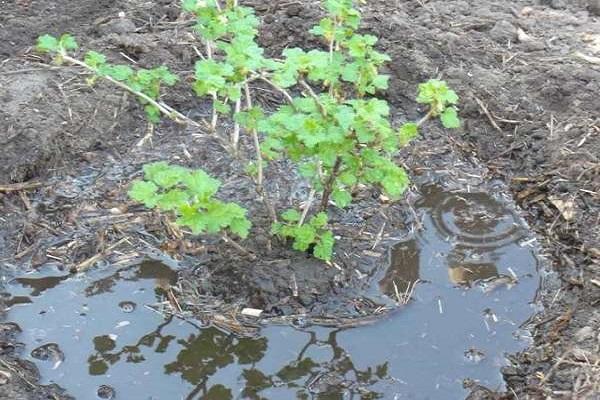
Top dressing
It is recommended to fertilize the bushes from the second year after planting in the ground. It is recommended to do this after the next watering, observing the following scheme:
- after thawing the soil, a composition based on 200 grams of wood ash and 40-50 grams of Nitrofoska is introduced under each plant;
- before flowering, you need to use a composition based on 10 liters of water, 200 grams of bird droppings, 500 grams of cow dung, 50 grams of potassium sulfate and the same amount of ammonium sulfate;
- in the fall, 10 kilograms of humus should be brought into the trunk circle - this is done at intervals of 2-3 years.
Support
After planting, young crops should be tied to a support. To do this, a vertical peg should be placed 10 centimeters from the bush. It is recommended to tie gooseberries slightly above the middle. This should be done 1-2 years after planting.
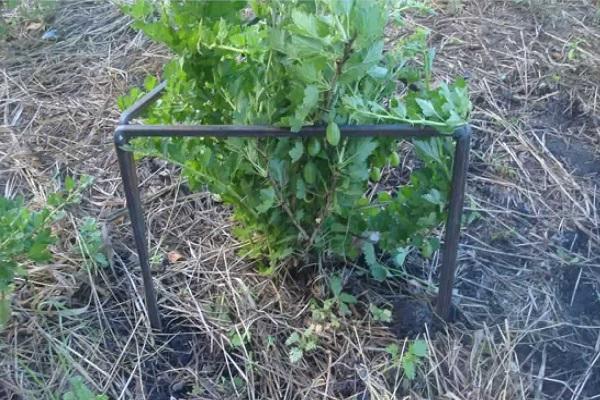
Shrub pruning
The maximum fruiting occurs on shoots 2-3 years old. It is recommended to delete older branches. The procedure should be carried out in late autumn. It is also worth removing weak branches that are directed towards the inside of the crown, and thin shoots that thicken the shrub.
Preparing for winter
After harvesting, the bush should be sprinkled with Bordeaux liquid.Fallen leaves are recommended to be collected and burned or put in compost pits. The soil around the shrub should be well dug up and fertilizers based on potassium and phosphorus should be applied.
It is recommended to carefully dig up the soil.
Around the bush it is worth making a mound of loose earth. This helps protect the plant from rodents. After that, the soil is covered with a layer of peat. Its thickness should be 10 centimeters.
In winter, it is recommended to sprinkle the gooseberry with a thick layer of snow. If it is absent, it becomes necessary to use any covering material.
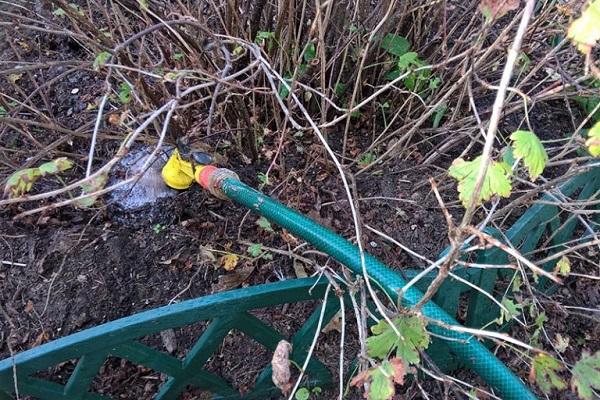
Fight against diseases, pests
This gooseberry variety encounters different types of spotting and rust. To prevent such problems, it is necessary to remove plant residues from the site. It is also important to avoid dampness and shade.
In spring and autumn, it is recommended to treat bushes with Bordeaux liquid with a concentration of 1%. Fungicides are allowed to be applied before and after flowering. They are also used after harvesting.
To prevent parasite attacks with the arrival of spring, the soil around the plant should be dug up and covered with a layer of mulch. For pest control, you can use an infusion of mustard or bitter pepper. In advanced cases, it is impossible to do without insecticides.

Gooseberry propagation
It is recommended to propagate the harlequin gooseberry by layering or dividing the bush. In the first case, near a healthy branch, it is worth making a furrow with a depth of 10-15 centimeters and laying a shoot in it. When the sprouts grow to 10-12 centimeters, they need to be hilled. In September, the plant is moved to a new location.
To divide a bush, you need to dig up a large plant and divide the root with a sharp tool. After that, the resulting crops are planted in the ground.
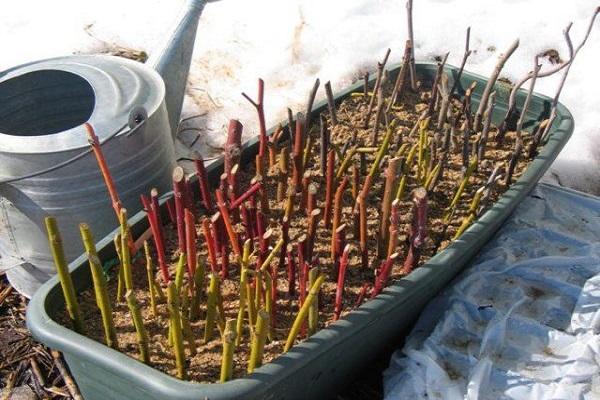
Harvesting and storage of crops
The harvest ripens in late July and early August. It is recommended to pick berries by hand. This is best done in dry and cloudy weather. The crop can be stored at a temperature of +5 degrees for 10 days. If longer storage is required, it is recommended to freeze the berries..
The Harlequin gooseberry is considered a popular plant. Its fruits are actively used for various blanks. In order for the plant to develop normally and give a full harvest, it must be properly looked after.

